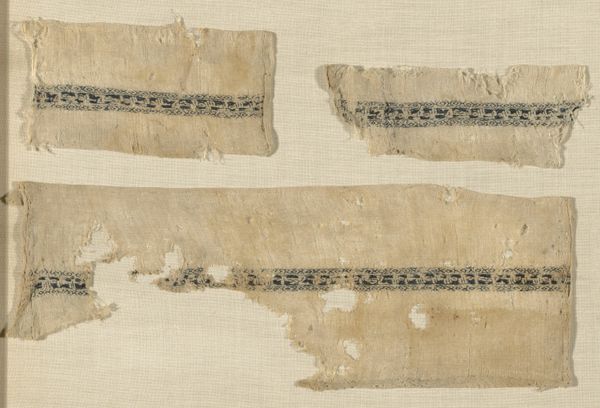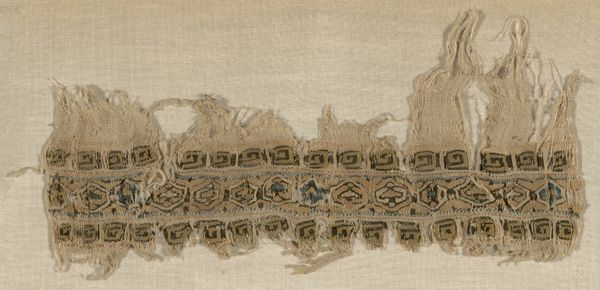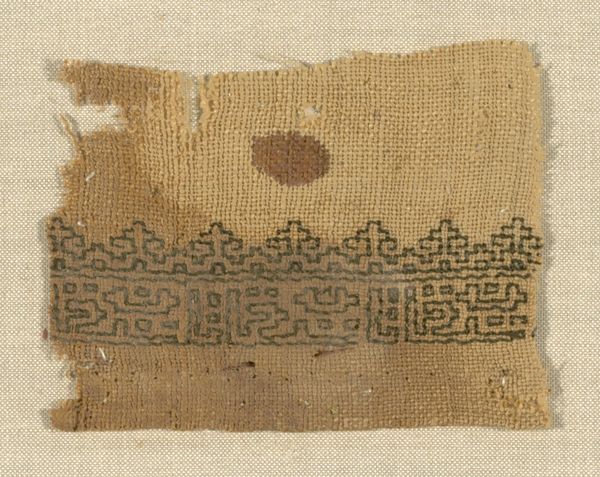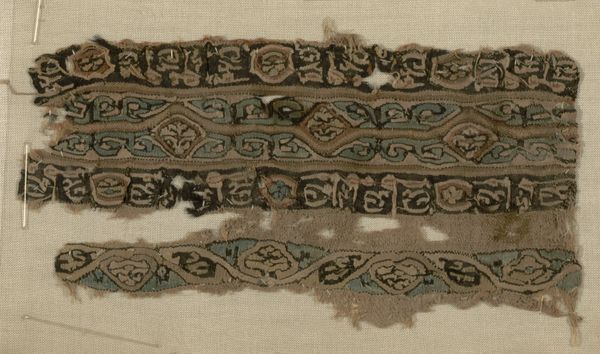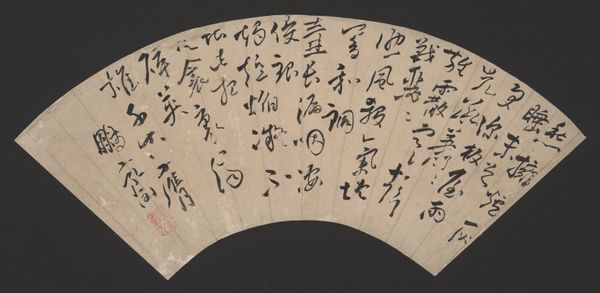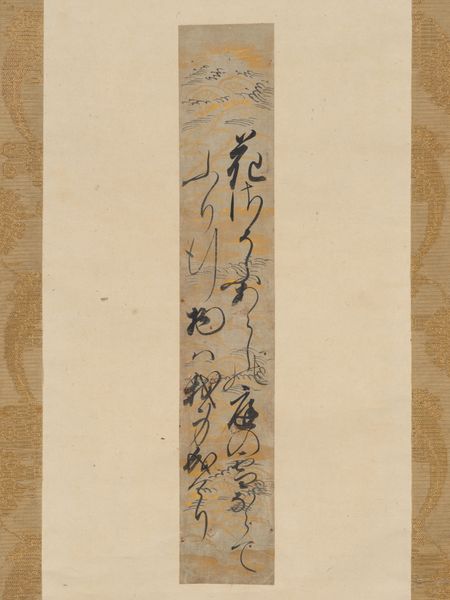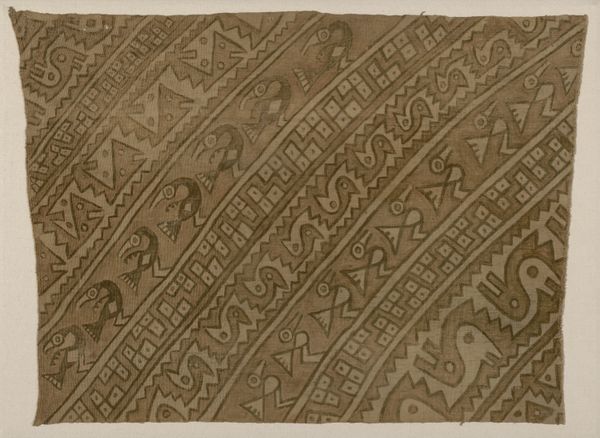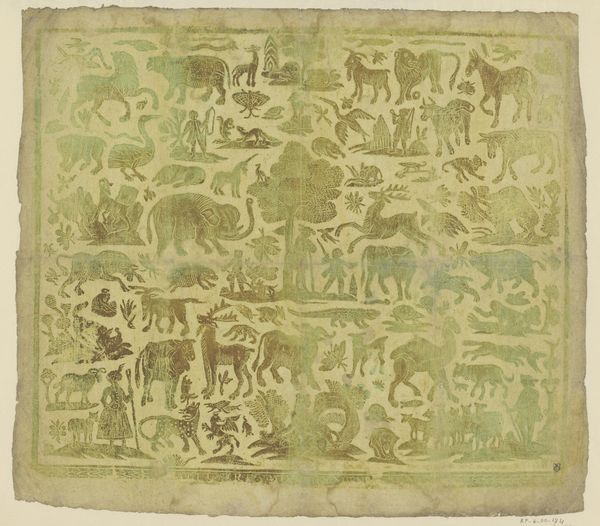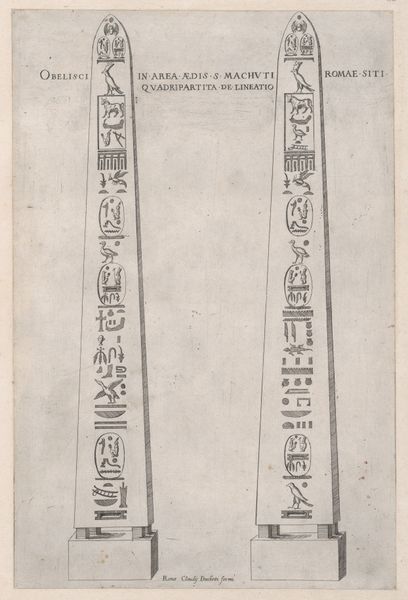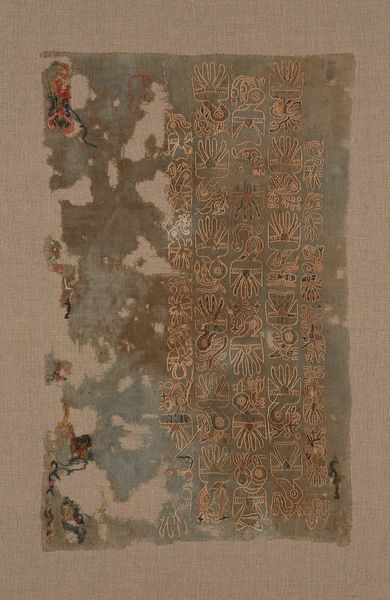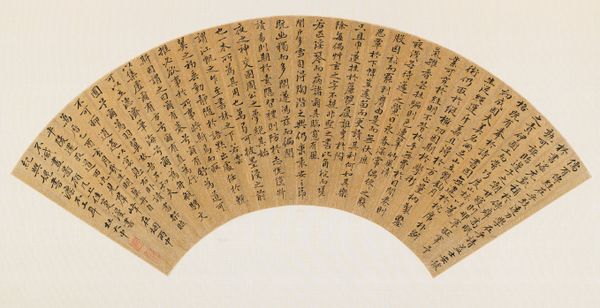
weaving, textile
#
weaving
#
textile
#
text
#
egypt
#
islamic-art
Dimensions: 7.6 × 20.6 cm (3 × 8 1/8 in.)
Copyright: Public Domain
Curator: Looking at this unassuming yet intriguing artwork, "Fragment," it’s hard not to wonder about its journey through time. It’s currently housed at the Art Institute of Chicago and is attributed to Egypt between 969 to 1171. Made of woven textile, it bears what seems to be writing on it. Editor: Immediately, I’m struck by how vulnerable it feels. The frayed edges, the faded writing, it whispers of impermanence, doesn't it? It’s like a page torn from history’s diary. Curator: Precisely. As an artifact of Islamic art from that period, such textiles played vital roles. They might have been part of clothing, or used for decorative hangings, or even as shrouds. The presence of text also implies something sacred. It’s incredible to imagine the contexts in which it existed. Editor: What is striking is that we look to this object centuries later to gather clues about an identity or community. So much pressure on this scrap! It seems the script is not just decorative but essential to understanding its purpose. Do we know what it says? Curator: Deciphering it, given its fragmented state, poses a significant challenge. The script is likely Arabic. What is knowable is the cultural presence. The prominence of text highlights the role of writing and language in Islamic societies, which emphasizes learning, scholarship, and religious practice. Editor: There is a haunting presence that exudes quiet dignity. Something about its raw simplicity renders the material world and human experience down to an elemental state. Curator: Textiles in this era reflected both artistic skill and social status, they were vehicles to share ideas and express power. Their creation also served an economic role. Imagine workshops bustling with weavers and dyers producing fabrics for trade and local consumption. Editor: Seeing it here, in a museum case, disconnected from its original setting… does that alter our perception of its inherent beauty or importance? Or perhaps, through this displacement, we give it a new, reflective existence. Curator: That's a poignant thought! It reminds us how much of history exists only in fragments and glimpses. To understand where an object has arrived, to look with purpose into what is made or revealed—or is gone. Editor: Indeed. It makes me feel so aware of time itself, as if I am holding it within me, if just for the briefest moment. A great reminder of the fragility of meaning.
Comments
No comments
Be the first to comment and join the conversation on the ultimate creative platform.
